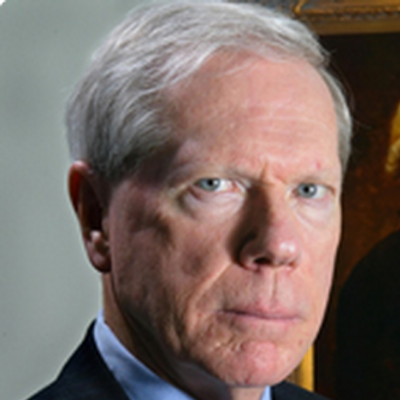by Paul Craig Roberts, Paul Craig Roberts:

Dear readers and fellow economists, the Federal Reserve is treating a rise in prices from supply shocks and disruptions from the Covid lockdowns and sanctions against Russia, Iran, and other countries as if it were a monetary inflation. It is true that too much money is chasing too few goods and services, but the cause is supply shortages and not excess consumer demand.
This fact is obvious, but it is not acknowledged. We know that the lockdowns and sanctions stopped production, caused transportation problems, caused energy shortages, caused business failures, and disrupted supply chains.
TRUTH LIVES on at https://sgtreport.tv/
We know that excess consumer demand in the US did not cause double digit inflation in Europe and some food prices in England to double. The inflation in the UK and Europe was caused by the Biden regime’s supply-disrupting sanctions and by their own Covid lockdowns.
A correct anti-inflation policy would be to remove the sanctions that restrict supply and the free movement of goods and services. The Federal Reserve’s higher interest rates simply suppress economic activity, thereby reducing supply, and results in higher prices.
Economists and financial journalists learned nothing from the Supply-Side Revolution. They still interpret the economy in the one-dimensional Demand-Side way in which inflation is caused by too much consumer income and results in excess demand that has to be quashed with high interest rates.
There is really no excuse for the Federal Reserve’s policy. Not even people appointed for political, not competence, reasons can be so stupid. So what is really going on?
US Treasury Secretary Janet Yellen told us on May 19 when she told a meeting of chief executives of US banks that more bank mergers are likely necessary. Simultaneously Yellen reaffirmed to the bank executives that the banking system was strong and sound. The financial journalists reporting the story did not notice the contradiction. If the banking system is strong and sound, why are more bank mergers necessary?
The main effect, and perhaps the purpose, of the Federal Reserve’s rise in interest rates, has been to drive large numbers of US banks into insolvency. The interest-bearing assets that US banks accumulated on their balance sheets during the decade of essentially zero interest rates have been driven down in value by the rise in interest rates.
Banks are not required to mark-to-market, which means that banks can keep their investments in financial instruments on their balance sheets at face value. Therefore, their insolvency is technical.
However, depositors regard the insolvency as real and withdraw their deposits. At this point the technical insolvency of the banks becomes real. The banks have to sell their assets to meet the deposit withdrawals, but the assets don’t sell at their face value. Therefore, it becomes clear that if the run on the bank continues, the bank cannot repay all the depositors.
Depositors are withdrawing their deposits for other reasons. The banks have not raised the interest rate they pay for deposits, but, thanks to the Federal Reserve’s high interest rate policy, depositors can get much higher interest rates from purchasing US Treasuries and from money market funds. Thus, the banking system is losing deposits. It was deceptive for Treasury Secretary Yellen to say the banking system is sound and strong.
I have become convinced that the purpose of the Federal Reserve’s rise in interest rates is unrelated to inflation. Inflation is the excuse. The agenda is to further monopolize the financial system by forcing the remainder of the regional banks into the hands of the five “too-big-to-fail” national banks.
The monopolization of the US banking system has been going on for some time. First, it was the approval of national branch banking. George Champion, Chairman and CEO of Chase Manhattan Bank and I, former Assistant Secretary of the US Treasury, opposed the measure, but no one listened to us.
The next step was the Clinton regime’s acquiescence to the repeal of the Glass-Steagall Act. Once the distinction between commercial and investment banks was abolished, the stage was set for financial instability, which is precisely what we have experienced.
The Federal Reserve and the US Treasury’s solution to failed banks and financial instability is to subsidize the purchase of the failed banks by the “banks-too-big-to fail.” Perhaps it is only a coincidence that “too-big-to-fail” New York banks’ executives are the directors of the New York Federal Reserve Bank, the operating arm of the Federal Reserve.
My conclusion is that the Federal Reserve’s policy has nothing whatsoever to do with inflation. Its intent is to further monopolize the financial system. A concentrated banking system is easier to control and makes it easier to impose digital currency that removes financial independence from the American people.
Read More @ PaulCraigRoberts.org



